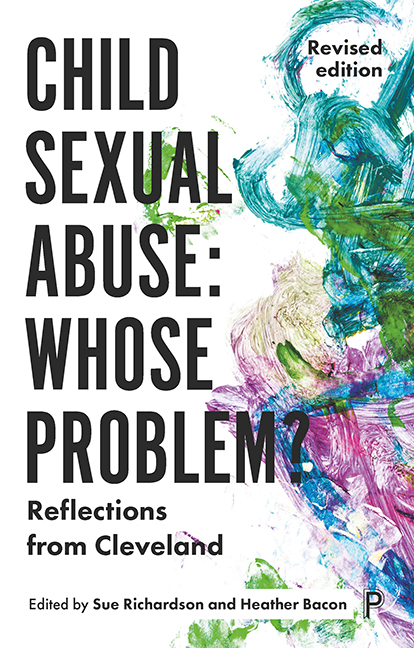Book contents
- Frontmatter
- Dedication
- Contents
- List of tables and figures
- List of abbreviations
- Notes on the editors and contributors
- Acknowledgements
- Preface
- Introduction:Why Cleveland still matters: connections with a new era
- one From Colwell to Cleveland: 1973 to 1988
- two A framework of belief
- three The medical diagnosis of child sexual abuse: the paediatrician’s dilemma
- four After the medical diagnosis: everyone’s dilemma
- five The continuum of disclosure
- six Seen but not heard: the children of Cleveland
- seven The unwanted message: child protection through community awareness
- eight Questions not answers: progressing the debate
- Conclusion:Thirty years later: how far have we progressed?
- Appendix
- References
- Index
six - Seen but not heard: the children of Cleveland
Published online by Cambridge University Press: 13 April 2022
- Frontmatter
- Dedication
- Contents
- List of tables and figures
- List of abbreviations
- Notes on the editors and contributors
- Acknowledgements
- Preface
- Introduction:Why Cleveland still matters: connections with a new era
- one From Colwell to Cleveland: 1973 to 1988
- two A framework of belief
- three The medical diagnosis of child sexual abuse: the paediatrician’s dilemma
- four After the medical diagnosis: everyone’s dilemma
- five The continuum of disclosure
- six Seen but not heard: the children of Cleveland
- seven The unwanted message: child protection through community awareness
- eight Questions not answers: progressing the debate
- Conclusion:Thirty years later: how far have we progressed?
- Appendix
- References
- Index
Summary
Editors’ summary
This chapter contains excerpts from clinical psychology sessions with 40 children in Cleveland, details of which were submitted to the Inquiry. The children's ages ranged from 2 to 15 years. Nine were in Group A, the remainder in Group B (see Chapter 3). Some, especially older children, made clear disclosures of abuse. The utterances of some younger children, though less clear-cut and sometimes bizarre, were thought to be equally significant. Disclosure sometimes followed soon after a sympathetic medical examination, but more often it would only come when the child felt safe. The attitude of the mother, who often had a conflict of loyalties, was crucial. Sometimes a disclosure was made but then retracted. A number of children for whom there were other indications of abuse were unable to disclose at all and remained trapped in silence.
A child-centred approach to investigation must take into account before, above and beyond anything else, the context of the abusive relationship for the child concerned. (Corinne Wattam, 1989, p. 41)
The concept of the continuum of disclosure can help us understand the way individual children present. In practice children can be grouped into three categories, which form the basis of this chapter. First, where the initial presentation is via a purposeful disclosure from the child, second where a suspicion is raised in another way but the child can readily be enabled to disclose during the initial intervention, and third when there is a high probability of abuse but the child remains silent despite intervention.
This chapter is devoted to children's own words and experiences, in an attempt to understand them and relate this to their position on the continuum at the time of intervention and investigation. Listening to children shows us that disclosure is a process rather than an event, and that children may well have a completely different framework for thinking about and experiencing what we as adults call child sexual abuse.
The child is envisaged in the centre of a series of concentric circles, the innermost being the family, the next the social context and outermost the systems for intervening in the family, in particular the child protection agencies (see Figure 6.1).
- Type
- Chapter
- Information
- Child Sexual Abuse: Whose Problem?Reflections from Cleveland (Revised edition), pp. 137 - 180Publisher: Bristol University PressPrint publication year: 2018



